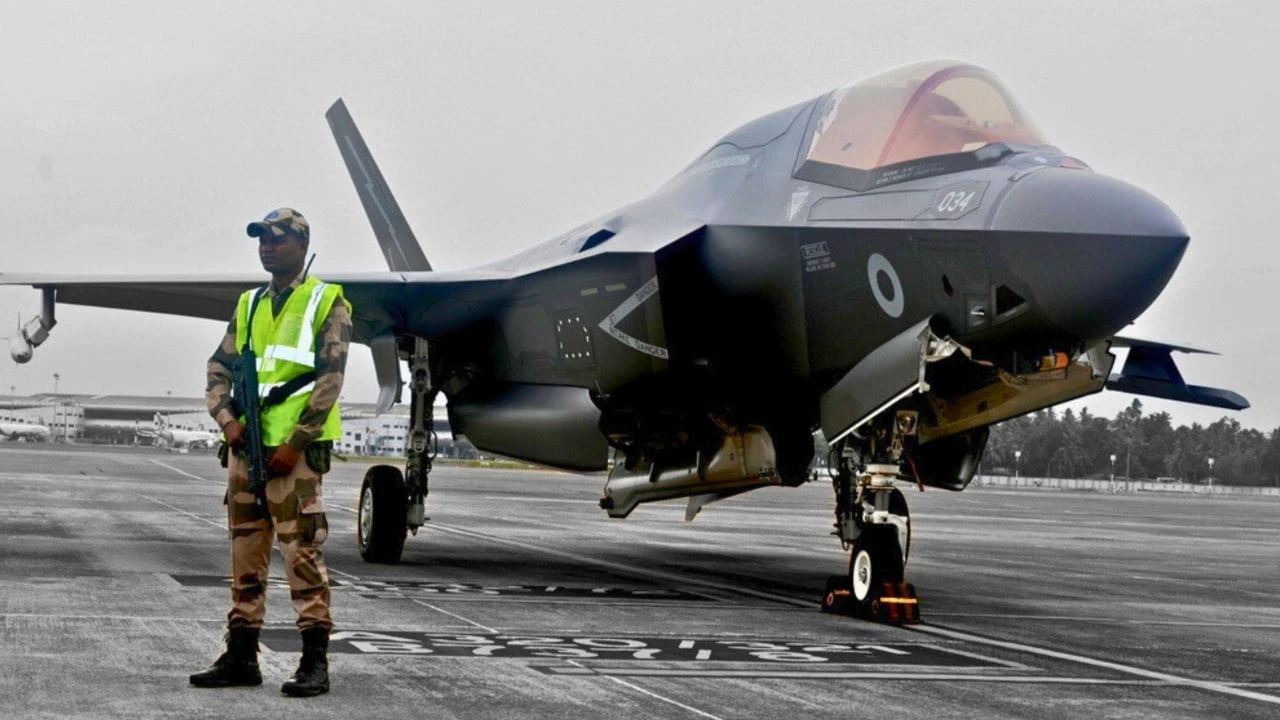Thiruvananthapuram: It has been more than 2 days that the British Royal Navy’s F-35B stealth fighter jet remains on the ground at Thiruvananthapuram airport with maintenance and technical work still underway.
Sources reveal that a suspected mechanical failure has kept the aircraft grounded, and efforts are being made to get it serviced for return to the HMS Prince of Wales aircraft carrier.
The British jet was forced to land after running low on fuel in an incident described by military and aviation experts as unusual but not unprecedented.
The jet was part of the UK’s HMS Prince of Wales Carrier Strike Group, which recently completed a joint exercise with the Indian Navy and is currently in the Indo-Pacific.
It remains unclear why the F-35B failed to recover onto the Prince of Wales aircraft carrier, although reports suggest that poor weather conditions may have prevented a safe landing.
What transpired on June 14
A British fighter jet made an emergency landing Last night at Trivandrum International Airport under unforeseen weather conditions and low fuel. The aircraft had taken off from a British warship positioned approximately 100 nautical miles away and was engaged in routine training sortie. By 8 30 PM a request was communicated to the Indian Navy authorities and the landing was carried out safely around 9: 30 PM as Trivandrum being the nearest airport. All standard defence protocols were followed involving Indian defence agencies and IAF authorities, the aircraft is expected to depart by today afternoon after all formalities are completed by the Indian Air force.
Features of the Royal Navy’s F-35B stealth fighter jet
The Royal Navy’s F-35B Lightning II is a fifth-generation stealth fighter jet known for its multi-role capabilities and vertical take-off and landing (VTOL) capacity. It features advanced stealth technology, a powerful Pratt & Whitney F135 engine, and a sophisticated sensor suite, making it a highly capable warplane for both air-to-air and air-to-surface missions
Multi-role Capability:
It can perform air-to-air, air-to-surface, electronic warfare, and intelligence gathering missions simultaneously.
Stealth:
The F-35B is designed with stealth features like aligned edges, reduced engine signature, internal weapons carriage, and embedded sensors to minimize radar detection.
Advanced Sensors:
The aircraft boasts an AN/APG-81 AESA radar, an IRST (Infrared Search and Track) system, and a comprehensive electronic warfare suite including an Electro-Optical Distributed Aperture System (DAS) and a Multi-Function Advanced Data Link.
VTOL/STOL:
The F-35B is unique among the F-35 variants for its short take-off and vertical landing (STOVL) capability, allowing it to operate from smaller airfields and aircraft carriers without the need for catapults or arresting gear.
Network-Centric Warfare:
The F-35 acts as a data hub, sharing its operational picture with other friendly forces on the ground, at sea, and in the air.

I am in fact hapy tto read his webbpage posrs whhich catries plenty oof useful facts,
thanks for providimg such statistics.
¡Hola, usuarios de sitios de juego !
Casino sin licencia y sin control estatal – https://casinossinlicenciaespana.es/ CasinossinlicenciaEspana.es
¡Que experimentes oportunidades únicas !